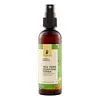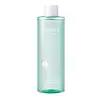What's inside
What's inside
 Key Ingredients
Key Ingredients

 Benefits
Benefits

 Concerns
Concerns

 Ingredients Side-by-side
Ingredients Side-by-side

Water
Skin ConditioningNiacinamide
SmoothingPropanediol
SolventBetaine
HumectantSodium Gluconate
Skin ConditioningSodium Lactate
BufferingSalicylic Acid
MaskingCentella Asiatica Extract
CleansingCamellia Sinensis Leaf Extract
AntimicrobialMelaleuca Alternifolia Leaf Extract
PerfumingAloe Barbadensis Leaf Extract
EmollientMelia Azadirachta Leaf Extract
Skin ConditioningGluconolactone
Skin ConditioningPhenoxyethanol
PreservativeEthylhexylglycerin
Skin ConditioningSodium Benzoate
MaskingPotassium Sorbate
PreservativeSodium Hyaluronate
HumectantHeptyl Glucoside
Allantoin
Skin ConditioningMelaleuca Alternifolia Leaf Oil
AntioxidantParfum
MaskingCI 77288
Cosmetic ColorantWater, Niacinamide, Propanediol, Betaine, Sodium Gluconate, Sodium Lactate, Salicylic Acid, Centella Asiatica Extract, Camellia Sinensis Leaf Extract, Melaleuca Alternifolia Leaf Extract, Aloe Barbadensis Leaf Extract, Melia Azadirachta Leaf Extract, Gluconolactone, Phenoxyethanol, Ethylhexylglycerin, Sodium Benzoate, Potassium Sorbate, Sodium Hyaluronate, Heptyl Glucoside, Allantoin, Melaleuca Alternifolia Leaf Oil, Parfum, CI 77288
Water
Skin ConditioningGlycerin
HumectantIsopentyldiol
HumectantHydroxyacetophenone
AntioxidantButylene Glycol
HumectantC12-14 Pareth-12
EmulsifyingOctyldodeceth-16
EmulsifyingSodium Citrate
BufferingEthylhexylglycerin
Skin ConditioningMelaleuca Alternifolia Leaf Extract
PerfumingCentella Asiatica Extract
CleansingCitric Acid
BufferingDisodium EDTA
Melaleuca Alternifolia Leaf Oil
AntioxidantPortulaca Oleracea Extract
Skin ConditioningVitex Agnus Castus Extract
AstringentChamomilla Recutita Flower Extract
MaskingCamellia Sinensis Leaf Extract
Antimicrobial1,2-Hexanediol
Skin ConditioningArctium Lappa Root Extract
Skin ConditioningPhellinus Linteus Extract
Skin ConditioningChamaecyparis Obtusa Water
MaskingSqualane
EmollientChamaecyparis Obtusa Leaf Extract
Skin ConditioningTocopherol
AntioxidantCetyl Ethylhexanoate
EmollientNeopentyl Glycol Diheptanoate
EmollientHydrogenated Phosphatidylcholine
EmulsifyingPolyglyceryl-10 Myristate
Skin ConditioningPolyglyceryl-2 Stearate
EmulsifyingStearic Acid
CleansingCetearyl Alcohol
EmollientCarthamus Tinctorius Seed Oil
MaskingOenothera Biennis Oil
EmollientPolyquaternium-51
Skin ConditioningCeramide NP
Skin ConditioningGluconolactone
Skin ConditioningMadecassoside
AntioxidantWater, Glycerin, Isopentyldiol, Hydroxyacetophenone, Butylene Glycol, C12-14 Pareth-12, Octyldodeceth-16, Sodium Citrate, Ethylhexylglycerin, Melaleuca Alternifolia Leaf Extract, Centella Asiatica Extract, Citric Acid, Disodium EDTA, Melaleuca Alternifolia Leaf Oil, Portulaca Oleracea Extract, Vitex Agnus Castus Extract, Chamomilla Recutita Flower Extract, Camellia Sinensis Leaf Extract, 1,2-Hexanediol, Arctium Lappa Root Extract, Phellinus Linteus Extract, Chamaecyparis Obtusa Water, Squalane, Chamaecyparis Obtusa Leaf Extract, Tocopherol, Cetyl Ethylhexanoate, Neopentyl Glycol Diheptanoate, Hydrogenated Phosphatidylcholine, Polyglyceryl-10 Myristate, Polyglyceryl-2 Stearate, Stearic Acid, Cetearyl Alcohol, Carthamus Tinctorius Seed Oil, Oenothera Biennis Oil, Polyquaternium-51, Ceramide NP, Gluconolactone, Madecassoside
Ingredients Explained
These ingredients are found in both products.
Ingredients higher up in an ingredient list are typically present in a larger amount.
Camellia Sinensis Leaf Extract is derived from the leaves of the tea plant. Black tea, green tea, and oolong tea are all harvested from this plant.
This ingredient has many skin benefits:
This ingredient contains polyphenols, a strong antioxidant. Antioxidants help fight off molecules that damage skin cells.
On top of that, the antioxidants in green tea neutralize free-radicals from the sun. This gives the skin some extra UV protection, but should not replace sunscreen.
Many components of tea have anti-inflammatory properties.
Polyphenols and L-theanine help soothe the skin and reduce irritation. The caffeine in Camellia Sinensis Leaf Extract helps calm inflamed blood vessels.
Other compounds found in tea include: Vitamin Bs, linoleic acid, magnesium, calcium, iron, and zinc.
Research has shown both drinking Camellia Sinensis Leaf Tea and applying it to the skin can help boost skin elasticity and hydration. Studies also show using tea extract may reduce sebum, or oil, production.
Learn more about Camellia Sinensis Leaf ExtractCentella Asiatica Extract (Centella) is derived from an herb native to Southeast Asia. It is famous for its anti-inflammatory and soothing properties.
Centella is rich in antioxidants and amino acids, such as Madecassic Acid and Asiaticoside.
Studies show the compounds in centella help with:
The combination of all these properties makes centella effective at soothing, hydrating, and protecting the skin.
Other great components of centella include Vitamin A, vitamin C, several B vitamins, and Asiatic Acid.
Fun fact: Centella has been used as a medicine and in food for many centuries. As a medicine, it is used to treat burns, scratches, and wounds.
Learn more about Centella Asiatica ExtractEthylhexylglycerin (we can't pronounce this either) is commonly used as a preservative and skin softener. It is derived from glyceryl.
You might see Ethylhexylglycerin often paired with other preservatives such as phenoxyethanol. Ethylhexylglycerin has been found to increase the effectiveness of these other preservatives.
Gluconolactone is a PHA. PHAs are a great gentle alternative to traditional AHAs.
When applied, Gluconolactone has the same affect on skin as AHAs such as lactic acid. It helps dissolve the dead skin cells in the top layer of your skin. This improves texture and brightens the skin.
PHAs are more gentle than AHAs due to their larger structure. They do not penetrate as deeply as AHAs and take a longer time to dissolve dead cells. Studies show PHAs do not cause as much irritation.
Gluconolactone has some interesting properties:
In a 2004 study, Gluconolactone was found to prevent UV damage in mouse skin cells and has not been found to increase sun sensitivity. However, we still recommend wearing SPF daily.
This ingredient is is an created by reacting gluconic acid with an alcohol.
Learn more about GluconolactoneMelaleuca Alternifolia Leaf Extract comes from the Tea Tree, Melaleuca alternifolia, Myrtaceae. This tea tree is native to Australia.
Tea Leaf extract contains antimicrobial and anti-acne properties.
This ingredient has perfuming properties and contains linalool and limonene. These fragrance and terpinen components can cause skin sensitivity.
Learn more about the benefits of Tea Tree Oil here.
Learn more about Melaleuca Alternifolia Leaf ExtractThis tea tree oil comes from the leaves of the Tea Tree plant. Tea tree oil has antioxidant, anti-inflammatory, and antimicrobial properties.
According to the book Journal of Profiles of Drug Substances, tea tree helps in reducing acne-causing bacteria such as Propionibacterium acnes. This is due to the Terpinen components of tea tree oil.
Tea tree may cause sensitivity and irritation for some people. This oil naturally contains fragrance such as linalool and limonene.
However, research shows irritation usually occurs when using pure tea tree oil and not in cosmetic products.
Tea tree oil was found to help relieve the symptoms of psoriasis in one study.
Tea tree oil is toxic when ingested. Another study showed it to caused damage to the nervous system of dogs and cats when applied to their skin or given orally.
Learn more about Melaleuca Alternifolia Leaf OilWater. It's the most common cosmetic ingredient of all. You'll usually see it at the top of ingredient lists, meaning that it makes up the largest part of the product.
So why is it so popular? Water most often acts as a solvent - this means that it helps dissolve other ingredients into the formulation.
You'll also recognize water as that liquid we all need to stay alive. If you see this, drink a glass of water. Stay hydrated!
Learn more about Water